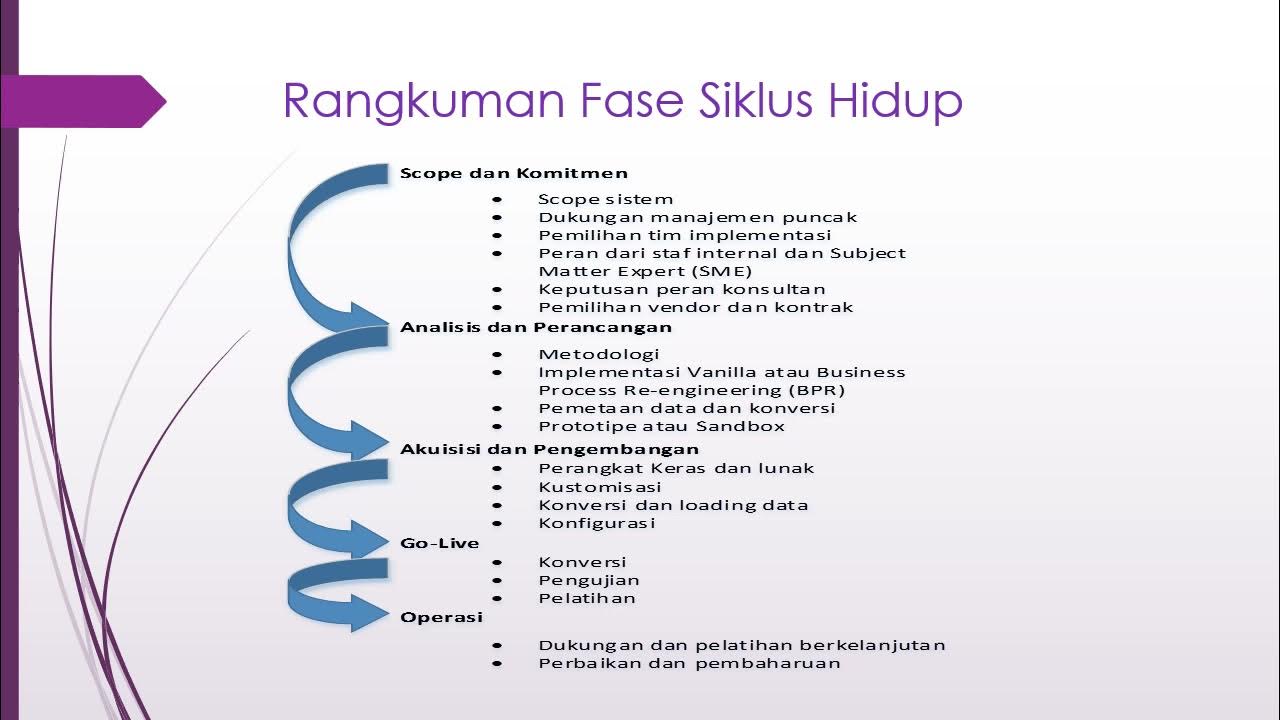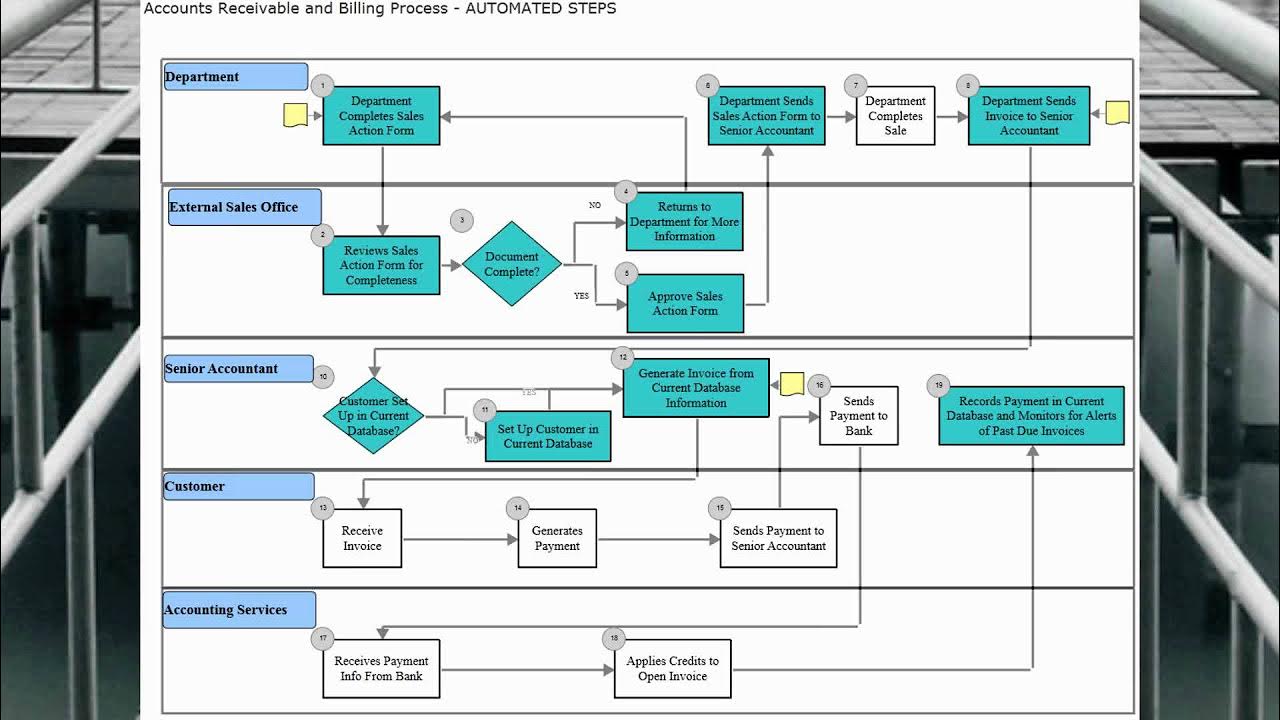Video Pembelajaran E Business Pertemuan 10
Summary
TLDRThis lecture covers the concept and implementation of Enterprise Resource Planning (ERP) in businesses. It explains the integration of various business functions such as finance, sales, distribution, and manufacturing within ERP systems. The focus is on improving efficiency, automating processes, and enhancing customer service. Key topics include ERP modules, the importance of integration, different implementation approaches, and the benefits and challenges of ERP systems. The lecture also discusses the strategic, technical, and organizational factors necessary for successful ERP implementation and how it transforms business operations, emphasizing the role of technology and system updates.
Takeaways
- 😀 ERP (Enterprise Resource Planning) is a concept for managing and planning company resources using integrated, multi-module application systems that enhance efficiency and provide better service to customers.
- 😀 ERP integrates all departments of a company, ensuring smooth information flow and synergy between departments such as finance, customer service, inventory, and manufacturing.
- 😀 The concept of integration in ERP systems means that different departments can access a centralized database, improving data accessibility and reducing delays in communication.
- 😀 ERP systems automate processes, eliminating the need for manual, time-consuming methods. For example, employees can access centralized data via interfaces instead of physical offices or separate databases.
- 😀 ERP allows businesses to conduct multiple transactions simultaneously, enabling multitasking and improving operational efficiency across various departments.
- 😀 ERP system implementation can follow different approaches: Big Bang, Step-by-Step, or Small Bank. Each method has its pros and cons, with Step-by-Step being the most commonly used for gradual, low-risk integration.
- 😀 The success of ERP implementation depends on strategies, tactics, technology, and organizational alignment. A well-planned approach can ensure smooth adoption across different business functions.
- 😀 ERP offers numerous benefits, including automation, centralized data management, and seamless interdepartmental communication. However, it also comes with challenges, such as the complexity of implementation and maintenance costs.
- 😀 The implementation of ERP in large organizations requires careful planning due to high costs and the involvement of multiple departments. However, it is essential for managing complex data, like those in universities with large numbers of students and faculty.
- 😀 ERP helps businesses transition from traditional to digital models, enabling them to adapt to modern business environments. It supports digital transformation by providing tools to streamline operations and integrate business functions into a unified system.
Q & A
What is ERP and why is it important for businesses?
-ERP stands for Enterprise Resource Planning, and it is a system that integrates key business functions like finance, sales, and inventory into one unified platform. It helps businesses improve efficiency, reduce costs, and streamline operations, making it easier to manage resources and data in real time.
How does ERP facilitate integration within a company?
-ERP facilitates integration by connecting different departments and functions, allowing them to share data seamlessly. For example, sales, finance, and inventory departments all use the same system to access up-to-date information, improving coordination and decision-making across the company.
What is the concept of 'multimodule' in ERP systems?
-The 'multimodule' concept in ERP refers to the use of multiple interconnected software modules, each serving a specific business function (e.g., finance, inventory, human resources). These modules work together to ensure that data flows smoothly across departments, improving operational efficiency and enabling better business management.
What are some key benefits of implementing an ERP system?
-The key benefits of ERP include enhanced efficiency, cost reduction, improved customer service, and better resource management. By automating and integrating processes, ERP helps businesses operate more smoothly, make data-driven decisions, and respond faster to market demands.
What are the challenges companies face when implementing ERP systems?
-Challenges include high initial costs, complexity of the system, resistance to change from employees, and the need for specialized knowledge to manage and maintain the system. Implementing ERP requires careful planning and a significant investment of time and resources.
What are the different approaches to ERP implementation?
-There are three main approaches to ERP implementation: the Big Bang method (deploying the system across the entire organization at once), the step-by-step method (gradually implementing the system by focusing on one department at a time), and the SMB (Small-Business) approach, where the system is implemented on a smaller scale before scaling up.
Why is user involvement critical during ERP implementation?
-User involvement is critical because it ensures that the system meets the needs of those who will be using it daily. Engaging employees early in the process helps reduce resistance to change, ensures better adoption, and enables more effective training and customization of the ERP system.
What are some key success factors in ERP implementation?
-Key success factors include having a clear strategy for ERP adoption, ensuring strong leadership and support, providing adequate training for users, ensuring that the system aligns with business goals, and regularly evaluating and updating the system to meet evolving needs.
How does ERP support business transformation?
-ERP supports business transformation by digitizing and automating business processes, which enables companies to move away from traditional methods and embrace more efficient, data-driven ways of operating. This transformation is particularly important as businesses shift towards digital platforms and require real-time data for decision-making.
Can you provide a real-world example of ERP implementation in a company?
-A real-world example is a large pharmaceutical company in Indonesia, which implemented an ERP system to manage data across multiple locations. The system integrated sales, logistics, and financial departments, enabling better coordination and efficiency across the business.
Outlines

Этот раздел доступен только подписчикам платных тарифов. Пожалуйста, перейдите на платный тариф для доступа.
Перейти на платный тарифMindmap

Этот раздел доступен только подписчикам платных тарифов. Пожалуйста, перейдите на платный тариф для доступа.
Перейти на платный тарифKeywords

Этот раздел доступен только подписчикам платных тарифов. Пожалуйста, перейдите на платный тариф для доступа.
Перейти на платный тарифHighlights

Этот раздел доступен только подписчикам платных тарифов. Пожалуйста, перейдите на платный тариф для доступа.
Перейти на платный тарифTranscripts

Этот раздел доступен только подписчикам платных тарифов. Пожалуйста, перейдите на платный тариф для доступа.
Перейти на платный тарифПосмотреть больше похожих видео

Enterprise Resource Planning (ERP) in 15 minutes

Video SE 5_2 Siklus Hidup Pengembangan ERP

[Odoo Tutorial] Implementasi Modul Inventory, Purchase, Manufacture, dan Sales

What is ERP Software? Here is everything you need to know.

Oracle Fusion Cloud Enterprise Resource Planning

Implementing a New ERP System
5.0 / 5 (0 votes)
